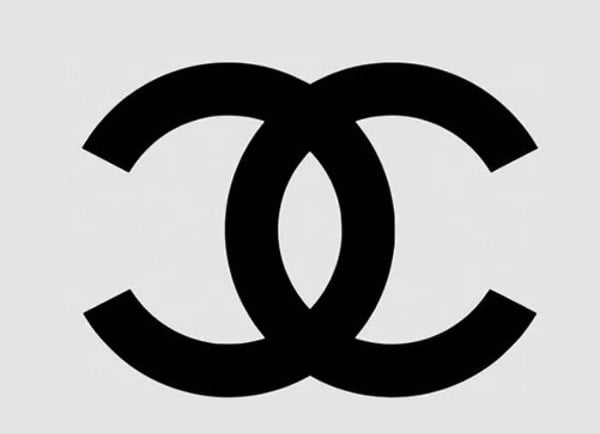The Power of Branding: Why Chanel Is More Than Just A Logo
By CKH
HOMEFASHION
Edited by Charlotte Waugh
3/5/20253 min read


Chanel’s iconic interlocking “CC” logo is instantly recognisable, but the brand's enduring allure extends far beyond its emblem. Through storytelling and visual identity, Chanel’s branding evokes specific emotions and associations that resonate with cultural trends and consumer aspirations.
Founded by Gabrielle “Coco” Chanel in 1910, the house has consistently redefined fashion, emphasising elegance, simplicity, and innovation.
Coco Chanel began her fashion journey as a milliner, opening her first hat boutique, Chanel Modes, at 21 rue Cambon in Paris. Her designs gained popularity among French actresses, bolstering her reputation as a chic tastemaker. In 1913, she expanded her offerings to include sportswear made from jersey fabric - a material once considered too ordinary for couture. This move revolutionised women’s fashion, introducing comfort and practicality without sacrificing style.
Throughout the 1920s, Chanel introduced several timeless pieces that remain central to the brand's identity. The Chanel suit, characterised by its clean lines and unstructured design, offered women a liberating alternative to the restrictive garments of the era. The little black dress (widely known as the LBD), another Chanel innovation, became a symbol of understated elegance. In 1921, she launched Chanel No. 5, a fragrance that has achieved iconic status and remains a bestseller over a century later.
One of Chanel’s most enduring designs is the tweed suit, first introduced by Coco Chanel in the 1920s and later reimagined by Karl Lagerfeld and Virginie Viard. Often crafted from bouclé wool, the suit embodies sophistication while evolving with modern tailoring and embellishments. Over the decades, Chanel has incorporated a variety of luxurious materials, from delicate silk chiffon and lace in ethereal evening gowns to structured leather in elegant yet edgy handbags and accessories. The signature quilted leather used in Chanel’s handbags, introduced in 1955, remains a staple. Meanwhile, contemporary collections continue to experiment with innovative textiles such as metallic thread weaves, sequined embroidery, and sustainable fabrics - honouring the brand’s heritage while adapting to modern fashion demands.
Chanel’s influence extends into accessories and cosmetics. The brand’s quilted handbags, adorned with the distinctive double-C clasp, have become coveted items worldwide. In 1924, Chanel established the ‘Société des Parfums CHANEL’ to produce and sell perfumes & cosmetics, marking the beginning of its foray into beauty products.
After Coco Chanel’s passing in 1971, the brand continued to evolve under the leadership of designers like Karl Lagerfeld, who took the helm in 1983. Lagerfeld honoured Chanel’s legacy while infusing modern elements, ensuring the brand remained relevant. Today, under the direction of Virginie Viard, Chanel continues to uphold its tradition of timeless elegance.
Chanel’s runway shows have become known for their theatricality and innovation. For instance, the Chanel Ready-to-Wear Spring 2015 Runway Show, presented on 30th September 2014 at the Grand Palais in Paris, featured a 130-metre-long catwalk designed as Boulevard Chanel, staging a fashion protest. The show culminated in a feminist march, with models holding signs bearing slogans such as “Make Fashion Not War” and “Ladies First.”
Chanel’s celebrity ambassadors have played a crucial role in shaping the brand’s image and cultural influence. Lily-Rose Depp, known for her effortless French elegance, follows in the footsteps of her mother, Vanessa Paradis, who was a Chanel ambassador in the 1990s. Margaret Qualley, with her graceful and artistic presence, embodies Chanel’s modern femininity, while Margot Robbie brings a fresh, sophisticated glamour to the brand. These ambassadors not only wear Chanel on red carpets but also personify its values, appearing in campaigns that blend cinematic storytelling with high fashion. Their association with Chanel strengthens its connection to both classic sophistication and youthful modernity, keeping the brand relevant across generations.
Chanel has impacted generations of women, and this shared experience is universal. Throughout my childhood, I admired both my mother and grandmother, carefully observing their use of Chanel products and aspiring to emulate their elegance. I now understand that the occasional ritual of applying Chanel products creates a formative image - one that represents an appreciation for timeless style and quality. Chanel is not just another logo; it is a symbol of empowerment for women across the world. If you ask me, that is truly something to cherish.
Chanel’s enduring success is rooted in its commitment to designs that transcend time, focusing on quality, innovation, and a deep understanding of women’s desires. The brand’s power lies not just in its logo but in its unwavering dedication to elegance and sophistication.
© Chanel
